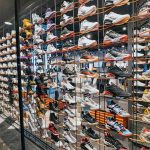Particularly hurt by soft sales in Europe and steep markdowns to clear DC Shoes inventory, Quiksilver Inc.s losses swelled in the second quarter ended April 30.
The loss in the period came to $32.4 million, or 19 cents a share, from $5.1 million, or 3 cents, in the same period a year ago.
Net revenues were down 6.7 percent to $459 million and fell 5.0 percent on a currency-neutral (C-N) basis. Besides the sale decline, the wider loss reflected erosion in gross margins to 46.0 percent from 49.2 percent. The margin drop was driven by DC Shoes clearance activities, increased discounting in Europe across all three flagship brands, and inventory write-downs related to brands and product categories discontinued in the quarter.
SG&A decreased to $218 million from $224 million due to ongoing expense reduction efforts. The quarter also included non-cash asset impairments of $5.3 million compared with $0.4 million a year ago.
The pro-forma loss, which excludes restructuring and other impairment charges, was $20 million, or 12 cents a share, versus a loss of $2 million, or 1 cent, a year earlier.
By region, Americas revenues increased 3.6 percent to $229 million, and were up 4 percent C-N. Most of that growth came from Roxy and the wholesale channel. DC footwear continued to have slow sell-through and required markdowns.
On a conference call with analysts, Andy Mooney, Quiksilvers recently-elected president and CEO, said DC shoes was hurt by a trend shift away from high-top silhouettes as well as by moving fairly aggressively into the mid-tier channel last year that impacted sell-throughs this year. Added Mooney on DC, We remain very strong in the core, we have work to do in mid-tier, and we are doing some cleanup in the women’s and men’s fashion side of the business.
E-commerce sales in the Americas grew. Retail revenues were down due to having 12 fewer stores but four-wall profitability of its Americas retail stores increased. Operating earnings in the Americas region still plunged 73.2 percent to $2.4 million due to lower gross margins. The quarter included $5.3 million in asset impairment charges in the region versus $415,000 a year ago.
In its Europe region, revenues decreased 15.8 percent to $165 million and 14 percent C-N. Wholesale revenues were impacted by poor weather, economic conditions and delays of its conversion to a SAP enterprise system that led to $16 million in canceled orders. Operating earnings dropped 73.0 percent to $7.0 million.
In the Asia-Pacific region, sales decreased 13.5 percent to $64 million, and 9 percent C-N, due to weakness in Australia. Asia-Pacific showed a loss of $6.1 million in the period against a loss of $4.0 million a year ago.
By brand on a C-N basis, Quiksilver decreased 10 percent to $182 million, Roxy slid 4 percent to $129 million and DC Shoes managed a gain of 1 percent, to also $129 million.
By distribution channel on a C-N basis, Wholesale decreased 7 percent to $344 million and Retail decreased 5 percent to $91 million. Second quarter comps in company-owned stores decreased 4 percent. E-commerce was up 31 percent to $23 million.
On the call, Mooney detailed progress the company has made on its profit-improvement plan first announced in mid-May. Actions included exiting the VSTR and Summer Teeth brands and exploring divesting other non-core brands (Moskova, Hawk Clothing, GNU Snowboards and Lib Tech.) It exited overlapping product categories, including Quiksilver women’s, DC surf and Quiksilver skate; exited or canceled most event sponsorships; and released a number of sponsored athletes. Marketing savings are expected to be deployed towards in-store display, print advertising and social media.
Product design and development is being consolidated to two global centers, one in Beirut, France, and the other in Huntington Beach, CA, down from 21 offices previously. Its product range is being significantly reduced, including a style count reduction of 30 percent or more.
Overall, the plan, when fully implemented, is expected to improve EBITDA by approximately $150 million by 2016 compared to 2012 results, with adjusted EBITDA increasing to at least 13 percent of net revenue. Approximately one-half of the improvement will come from supply chain optimization, and the other half primarily from corporate overhead reductions, licensing opportunities, revenue growth and improved pricing management. Revenues are expected to increase at a compound annual growth rate of approximately 2.5 percent over that three-year period.
Mooney said the 2.5 percent growth rate target is conservative, particularly given that growth in emerging markets in the quarter was 13 percent on a C-N basis. But he said Quiksilvers and Roxys core surf and snowboard channel remains highly-fragmented and growth may be flat in the channel.
Roxy still has potential for significant channel expansion into sporting goods, targeting fitness, potentially running and any number of activities that are relevant to young women. DC likewise has room to grow in the mid-tier and more athletic channels as well. Said Mooney, We are almost nonexistent in specialty athletic channels worldwide right now.
But Mooney still said the near-term focus will be on reducing costs with meaningful improvements in the quality of its product offering as well as the benefits from reallocating its marketing mix not expected to until fall 2014.















